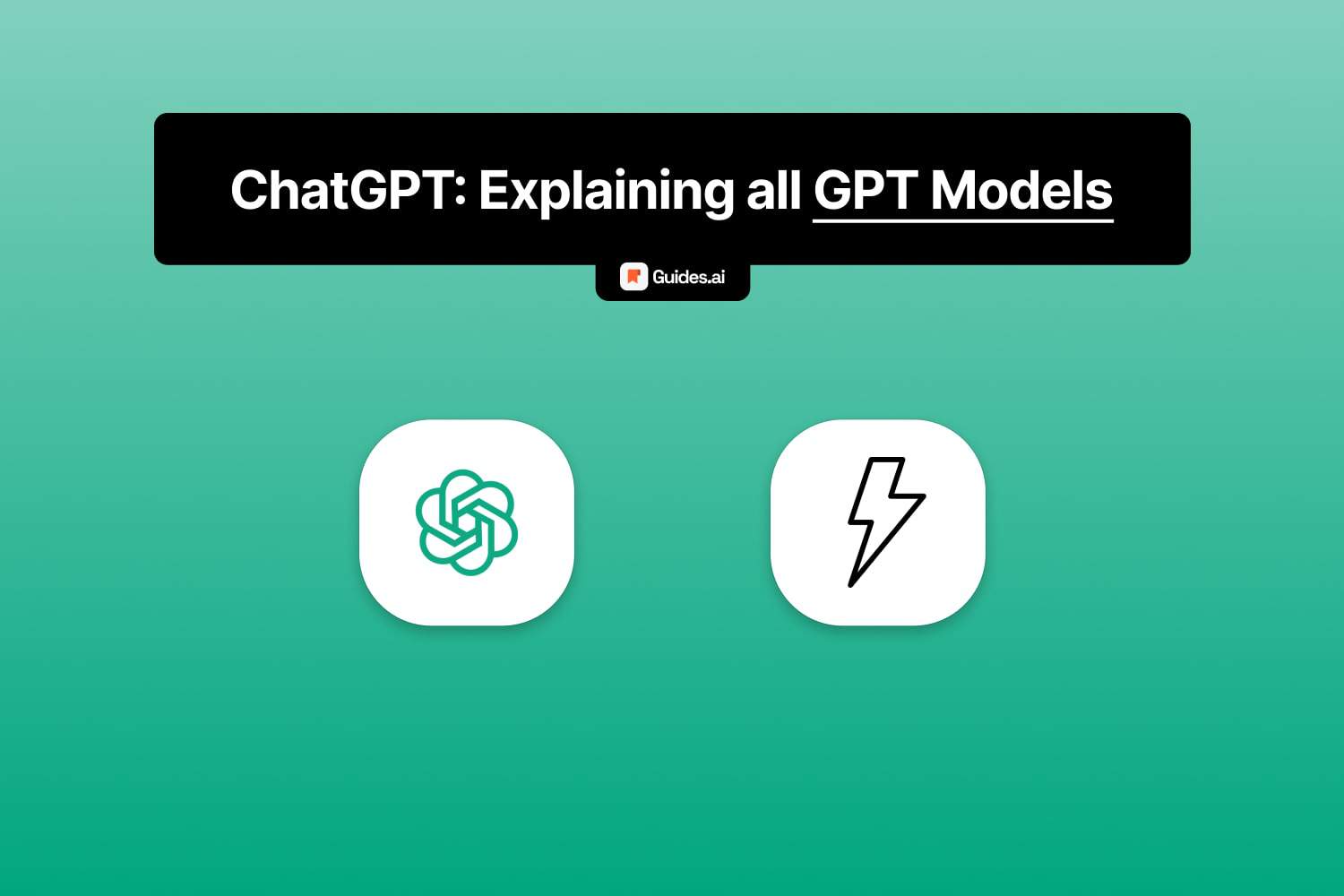Confused with the bar at the top of ChatGPT?
You may be wondering…
What is ChatGPT-3, 3.5, 4? What does all that mean?
In this guide, we’ll answer all of your concerns.
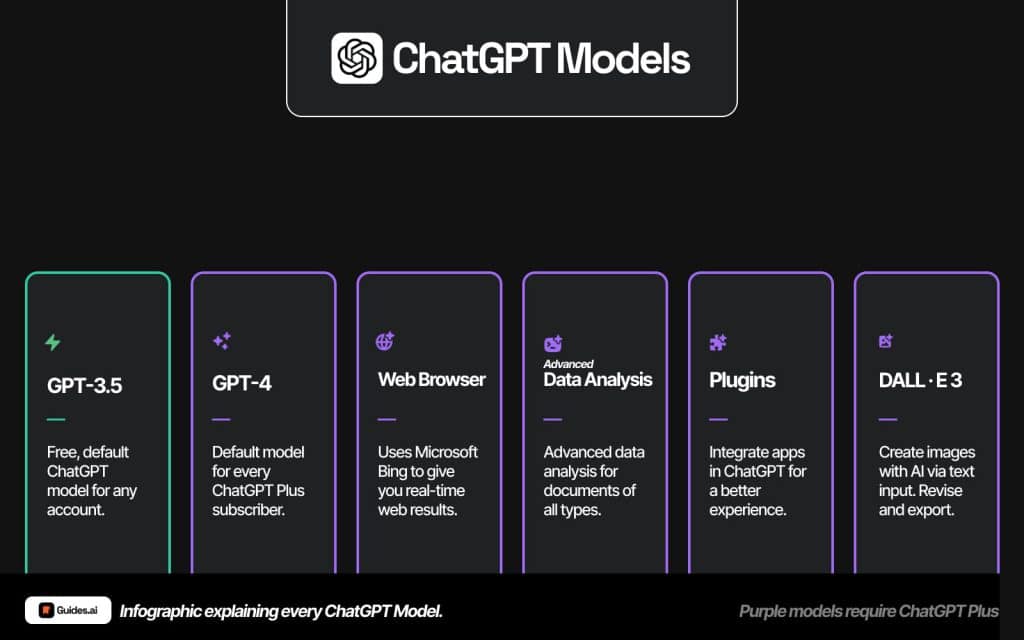
Let’s check it out, step by step.
What are ChatGPT models?
ChatGPT models are machine learning models designed to generate human-like text based on the data they’ve been trained on.
The better the model, the better and more useful the response.
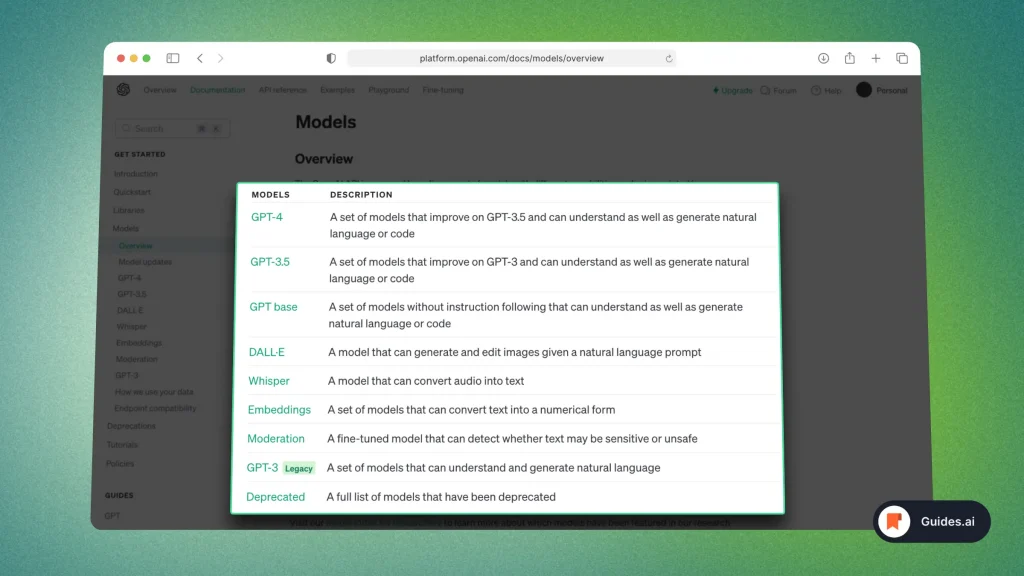
The idea is to:
- Feed the model some input text
- And it will generate a relevant and coherent response
It’s not just spitting out memorized answers — it’s generating text based on the patterns it’s learned.
That’s why we train ChatGPT with custom data.
How to select a model in ChatGPT
You can select a model in ChatGPT by starting a new chat, clicking on the bar at the top, and selecting your preferred model.
Note: ChatGPT doesn’t allow you to change the model mid-conversation. You have to start over if you want to change the model.
Below is the step-by-step process to select a model.
1. Open ChatGPT
The 2 most popular scenarios are:
- You’re already in ChatGPT → Then you have to start a new conversation
- You’re not there yet → Open the app by going to chat.openai.com
That is the official ChatGPT address.
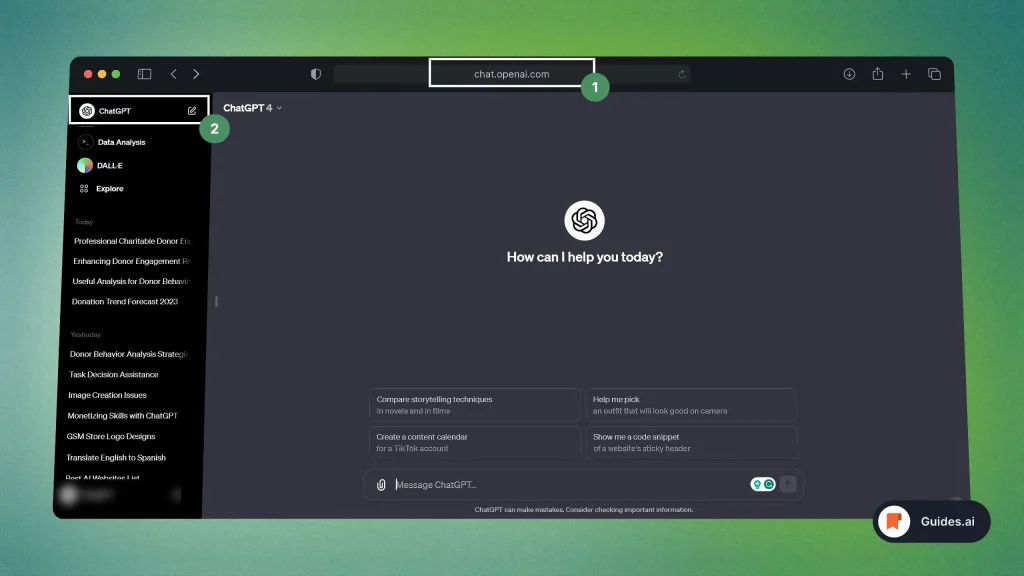
Simply open a new conversation and don’t send am message just yet.
2. See your Models
At the top of the page, you’ll see these two buttons:
- GPT-3.5
- GPT-4
Hover your mouse on them — they tell information about the model you’re currently using.
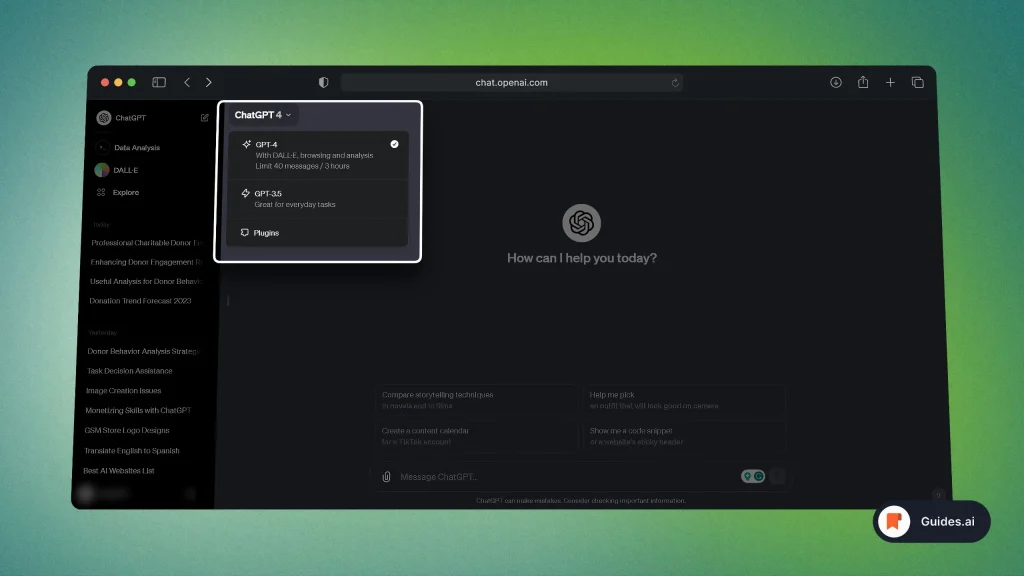
If you hover above GPT-3.5, it will say:
“Our fastest model, great for most every day tasks.”
– OpenAI
This is available Free and Plus users.
However, if you have ChatGPT Plus, you can also access GPT-4.
Let’s see how to do it.
3. Change models
- GPT-3.5 is a single model
- GPT-4 has a few plugins
Simply click on the Model/Plugin you want to use

- Click on the model you want to use.
- Get back to the “Send a message” box.
- Start chatting.
ChatGPT will tell you which model you’re using once you send a message.
You can use GPT-4 plugins only if you’re a Plus subscriber.
How do you know which model you’re using?
- You’ll notice a bar at the top — it goes away when scrolling down
- You can even ask ChatGPT which

In this example, we’re using the “regular” GPT-4 model.
Not plugins, just the GPT-4 version for most purpose.
The different ChatGPT models
Currently, there are 6 available ChatGPT models: GPT-3.5, Default GPT-4, Bing, Advanced Data Analysis, Plugins, and DALL-E 3.
Below is a list of all the models by OpenAI, ChatGPT’s maker:

- You can access the official ChatGPT-models list right here.
- However, that is not entirely detailed
That’s why we’ll explain all of these right now, in simple words.
1. GPT-3.5

Pros
- Smart: Uses top-notch tech to understand language.
- Multi-Tasker: Does a lot—writes, summarizes, translates.
- Easy to Use: Friendly for both coders and regular folks.
Cons
- Needs Power: Eats up a lot of computer juice.
- Not Human: Lacks real understanding and feelings.
- Can Be Biased: Might say stuff that’s touchy.
Pricing
- Free: Limited use at zero cost.
- Plans: Monthly fees for more use.
- Pay Up: Cost based on how much you use it.
Features
- Fills in Text: You start, it finishes.
- Speaks Many Languages: Not just English.
- Tweakable: Coders can fine-tune its skills.
2. GPT-4: Default
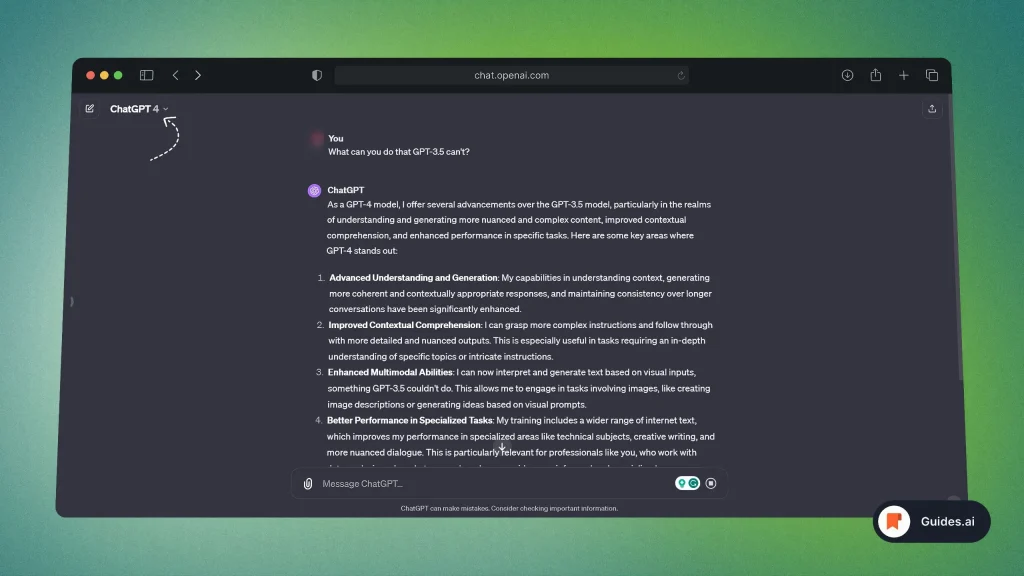
Pros
- Smarter: Even better at understanding and generating text.
- More Versatile: Wider range of tasks, even more accurate.
- Context King: Grasps longer conversations and deeper topics.
Cons
- Power Hungry: Needs even more computing oomph.
- Still No Feelings: It’s smart, but not emotionally savvy.
- Touchy Topics: Still risks saying sensitive stuff.
Pricing
- Paid: You need to upgrade to ChatGPT Plus.
- Tiered Plans: Pay more, get more.
- Volume Pricing: Big users, bigger bills.
Features
- Better Text: Upgraded text completion and generation.
- Multi-Lingual: More languages supported.
- Fine-Tune: Even more customizable by devs.
3. GPT-4: Browse with Bing
Also known as: ChatGPT Web Browsing.

Pros
- Web-Savvy: Can browse the web for real-time info.
- Up-to-Date: Delivers current data and sources.
- Smart and Efficient: Same GPT-4 smarts, plus web browsing.
Cons
- Resource Hog: Even more computer power needed.
- Trust Factor: Web info isn’t always reliable.
- Complexity: More features, steeper learning curve.
Pricing
- Basic Free: Some browsing at zero cost.
- Premium Tiers: More browsing, more bucks.
- Data-Driven: Pay based on web data used.
Features
- Web Browse: Pulls in current web info.
- Cite Sources: Gives you the where from.
- Still Tweakable: Devs can still fine-tune it.
4. GPT-4: Advanced Data Analysis
Previously known as “Code Interpreter”.
Note: We’ve also got a guide on how to use Advanced Data Analysis (model).
Let’s get back to the description, though.
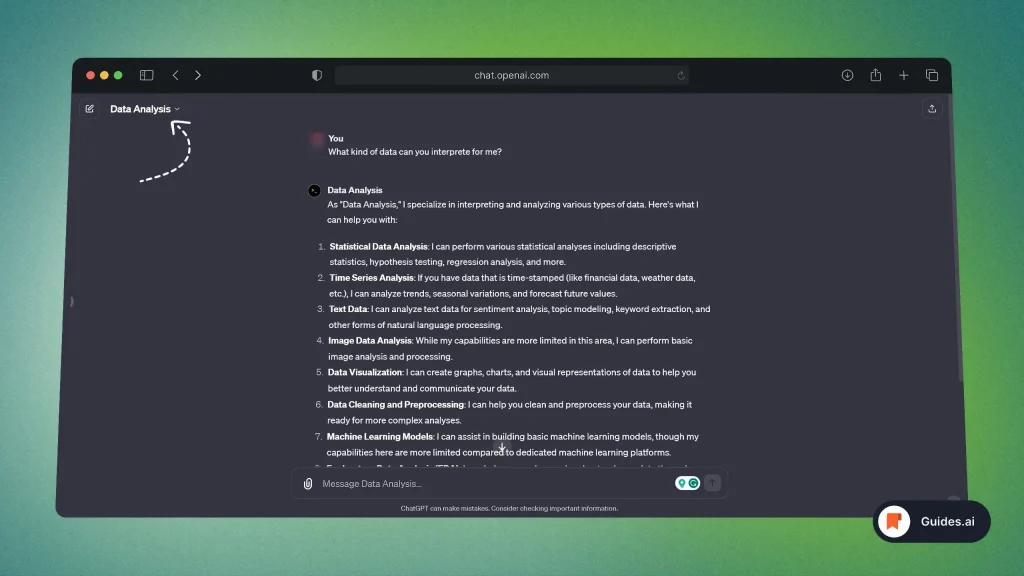
Pros
- Data Pro: Crushes data analysis tasks.
- Insightful: Generates valuable insights from raw data.
- Integrated: Works well with databases and spreadsheets.
Cons
- Even More Power: Seriously, you’ll need a beefy setup.
- Accuracy: Good but not a substitute for expert analysis.
- Cost: Advanced features mean a heftier price tag.
Pricing
- Not Free: This one’s for serious users, so it’ll cost you.
- Package Deals: Bundled with other GPT-4 services.
- High Roller: Premium pricing for top-tier data work.
Features
- Data Crunch: Analyzes big data sets.
- Smart Reports: Auto-generates summaries and insights.
- DB Sync: Can link up with your databases.
5. GPT-4: Plugins
Note: We also have a guide for how to use ChatGPT Plugins.
First, let’s see what this model does first.
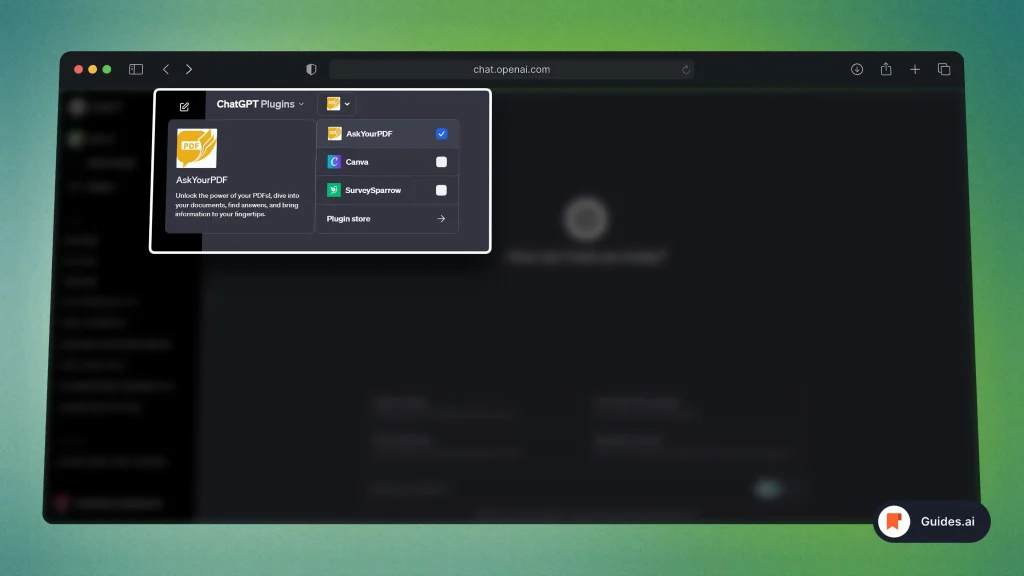
Pros
- Plug ‘n Play: Easily add features through plugins.
- Adaptable: Make it what you want with custom code.
- Expandable: Keep adding capabilities as needed.
Cons
- Complicated: More moving parts, more to learn.
- Resource Intense: As always, needs a strong setup.
- Cost Variance: Each plugin could add to the price.
Pricing
- Base Cost: Pay for the core model first.
- Plugin Fees: Extra charge for specialized plugins.
- Bundle Up: Discounts for multiple plugins.
Features
- Modular: Add features via plugins.
- Custom Code: Inject your own logic.
- Feature-Rich: The sky’s the limit, really.
6. GPT-4: DALL·E 3
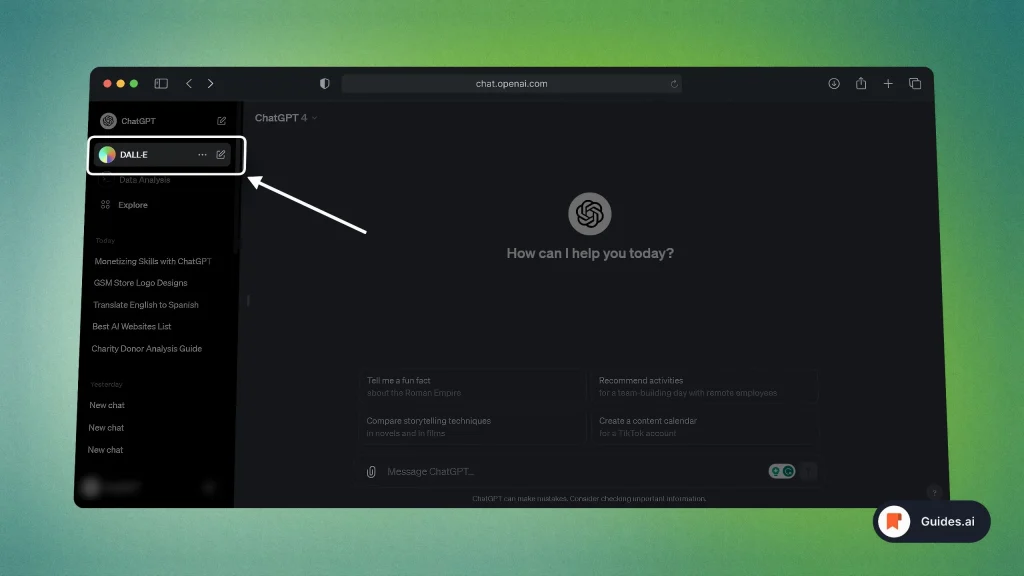
Pros
- Art Genius: Creates jaw-dropping visual art from text.
- Super Versatile: From doodles to masterpieces, it does it.
- Quick: Gets you results in a snap.
Cons
- High Demand: Eats up even more resources than text models.
- IP Issues: Could tread on copyrights or originality.
- Expensive: High-quality art doesn’t come cheap.
Pricing
- Not Free: Expect to open your wallet for this one.
- Tier System: Pay more, get more art.
- Bulk Rates: Discounts for mass creations.
Features
- Text-to-Art: Give it words, get back pictures.
- Variety: Styles, formats, you name it.
- Real-Time: Instant art creation on demand.
Sounds exciting? Read our guide on how to make images with ChatGPT.
7. Custom GPT
Did you know you can also create a customized GPT model?
Meaning, you can make your own ChatGPT and have it behave the way you want it to.
Read the full story: How to make your own GPT
Here’s what it looks like:

You can add a custom profile picture, name, and response settings.
However, you’ll need to subscribe to ChatGPT Plus for this
Conclusion
You’ve just learned the differences between ChatGPT’s models — from free to paid.
The best part about GPT-4: You don’t need to pay to use any of the other models.
They’re all included in the GPT-4 model.
Learn how to become more productive with our guides on how to use AI.
Thank you for reading this,
Ch David and Daniel

